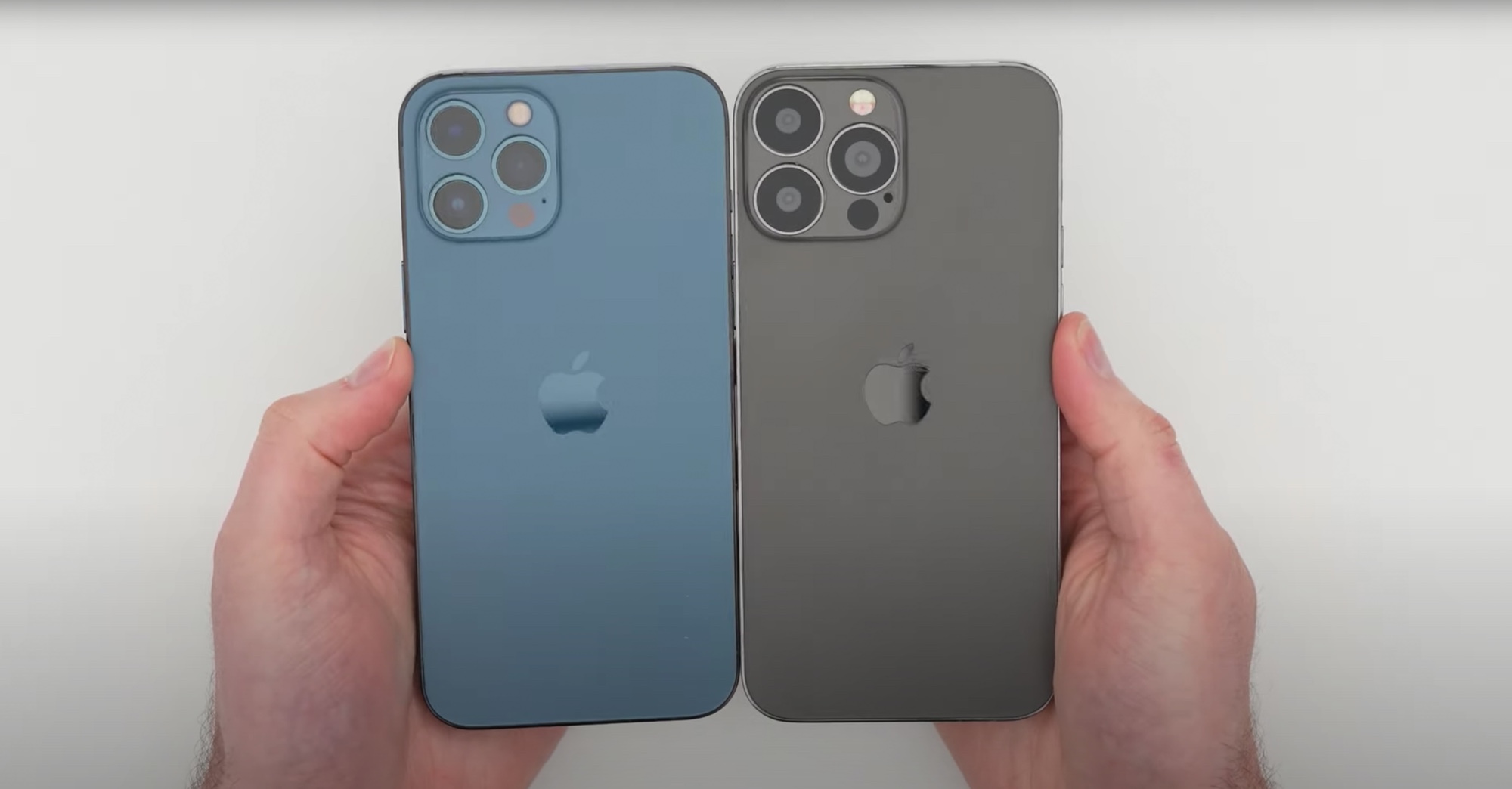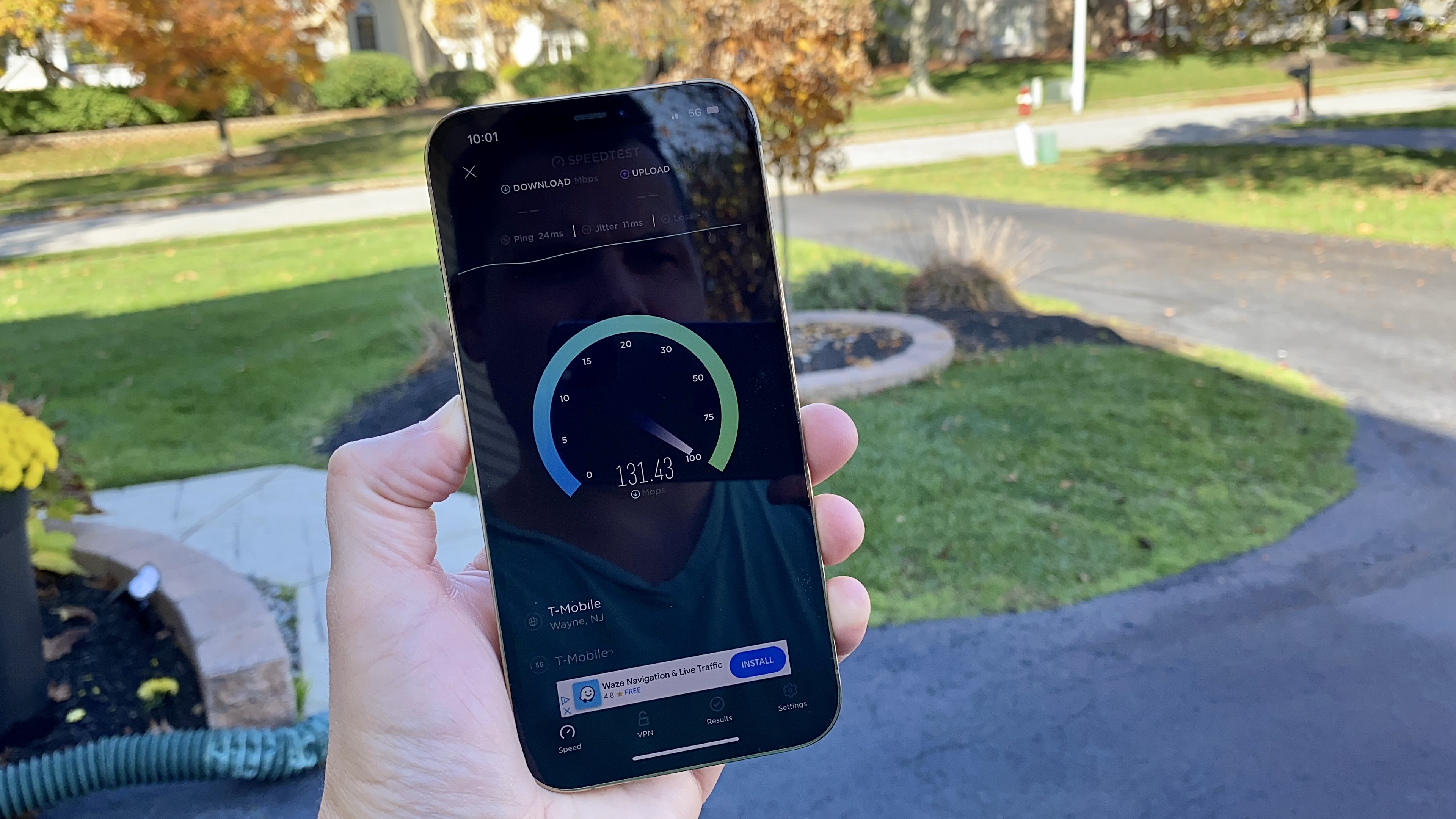The iPhone 13's satellite news is likely not what you think
Signs point to Apple adding safety features to future iPhones

It's the kind of iPhone 13 rumor that makes even jaded Apple observers sit up and take notice — the iPhone 13 could potentially add satellite communications to go with its existing cellular connectivity. The juicy rumor came from a respected source, analyst Ming Chi-Kuo, who is typically wired in to Apple's supply chain. He often has insight into what's next, which made people all the more ready to embrace the notion that you'd be able to whip out your new iPhone and enjoy reliable connectivity even where LTE and 5G don't reach.
It sounds too good to be true. Which is why this rumor probably is.
- The best iPhones right now
- 5 big iPhone 13 upgrades it needs to beat the Galaxy S21
- Plus: How to use Samsung Galaxy Watch 4 to measure body composition
It's probable that the iPhone 13 will offer some sort of extended connectivity when it arrives next month. It therefore could mean a lot of the elements that appear in Kuo's report on satellite support are in place. But the rumor making the rounds that the iPhone will be able to stay in constant contact with Low Earth Orbit (LEO) satellites may be a step too far.
What the iPhone 13 rumor claims
Kuo's claim about satellite connectivity in the iPhone 13 came via a research report spotted by MacRumors. In that report, Kuo is said to have claimed that upcoming iPhones would tap into LEO satellites to make calls and send messages without using a cellular connection. That's a handy feature if you're traveling or backpacking in an area with spotty cellular service — or you're one of the many Americans living in a rural area that's ill-served by current cellular networks.
Specifically, it's the Qualcomm X60 modem that's expected to be included with the iPhone 13. Apparently it would be customized to support satellite communications. Globalstar would be the provider of that connectivity, potentially working with wireless carriers to incorporate that into existing coverage plans.

Additionally, as 9to5Mac notes in its analysis of the news, Globalstar data plans aren't exactly cheap, with unlimited texting alone costing $34.95 a month while 150 minutes worth of talk time starts at $79.99. It's hard to see the carriers that partner with Globalstar happily taking on those costs — or iPhone 13 buyers tacking on the extra money onto their cellular service plans.
So how likely is it that the iPhone 13 arrives this fall with the kind of satellite communication capability described in reports on Kuo's report? "I'm deeply skeptical," said Avi Greengart, Founder and Lead Analyst at Techsponential, a consumer technology market analysis and advisory services company.
Sign up to get the BEST of Tom's Guide direct to your inbox.
Get instant access to breaking news, the hottest reviews, great deals and helpful tips.
What could really be happening with the iPhone 13
In regards to the iPhone 13, we're not saying that Kuo's report should be dismissed out of hand — merely that people are focusing on the wrong part of it. The iPhone 13 could offer improved communication and connectivity, even if it's not of the satellite variety.
The key to understanding this rumor could be the modem powering the iPhone 13, again expected to be a version of Qualcomm's Snapdragon X60 modem. While that's a powerful modem that comes with 5G and LTE support, the X60 isn't Qualcomm's top-of-the-line offering — that's the Snapdragon X65. And as noted by PCMag lead analyst Sascha Segan in an enlightening Twitter thread attempting to unpack this iPhone 13 rumor, certain X65 supports bands aren't included on the X60 — specifically a pair of bands called b53 and n53. That comprises terrestrial spectrum owned by Globalstar in the 2.4GHz range. "It's a ground based band [Globalstar] wants to enhance LTE," Sagan tweeted.
But ... you take b53/n53 connectivity, it becomes "iPhone has Globalstar" which becomes "iPhone has satellites" and here we are. New ground-based LTE/LAA band. Not satellites. @TechmemeChatterAugust 30, 2021
In other words, the likely scenario is that the iPhone 13 is set to received a modified version of the X60 modem that's capable of working with terrestrial spectrum affiliated with Globalstar. The move likely doesn't have anything to do with Globalstar's satellite business — at least not at this point.
What the iPhone 13 might do with that bolstered cellular connectivity is less certain, though Bloomberg filled in another piece of the puzzle Monday evening (Aug. 30). A new Bloomberg report claims that satellite connectivity coming to future iPhones will focus on safety/emergency features — essentially being able to send a text message to emergency services and your contacts when you're out of cellular range.
While the hardware may be in place with the iPhone 13's arrival, Bloomberg's report notes that the emergency feature itself may not be ready until next year. So don't expect satellite connectivity to be part of the iPhone 13 launch next month.
iPhone 13 outlook
The takeaway here is that a future iPhone with some sort of satellite connectivity is plausible though it may be a while before the feature itself is ready for prime time. And the ability to connect to satellites may have an impact beyond the iPhone
Apple's reportedly working on everything from its own cars to AR-based glasses, and the ability to work with LEO satellites could definitely be a key part of either of those ambitions. For now, though, it seems as if the iPhone's 13 modified modem is going to stay earth-bound for now.
Not that the iPhone 13 doesn't boast plenty of other features that should excite would-be shoppers. In addition to a new and improved processor, Apple's new phone is expected to get improved cameras, a smaller notch, and fast-refreshing displays, at least on the iPhone 13 Pro models. Satellite connectivity would certainly be a welcome addition to those enhancements, but I wouldn't count on it being a centerpiece of the iPhone 13's debut.
Philip Michaels is a Managing Editor at Tom's Guide. He's been covering personal technology since 1999 and was in the building when Steve Jobs showed off the iPhone for the first time. He's been evaluating smartphones since that first iPhone debuted in 2007, and he's been following phone carriers and smartphone plans since 2015. He has strong opinions about Apple, the Oakland Athletics, old movies and proper butchery techniques. Follow him at @PhilipMichaels.

